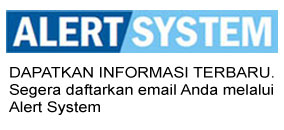It’s hard to believe, but it’s been nearly one month since we held the Private Sector in Health Symposium in Sydney. As such, we wanted to take the opportunity to share resources with you from the day.
Spurred on by the keynote presentations, a key question to emerge from the day is ‘what exactly do we mean by the private sector’? People often limit the definition to ‘for-profit organisations’, but from the day we saw a large number of non-state actors operating in health systems around the world. There were also questions of separating out private provision of services from private financing for health services. These are some of the questions we hope to take to the next Symposium.
On that note, David Bishai and Gerry Bloom, the co-organisers of this year’s Symposium are pleased to announce that they will be passing the torch to Freddie Ssengooba and Kara Hanson. They’ll be working with the Scientific Committee to determine the most appropriate shape, format and location for that — so watch this space.
In the meanwhile, we’ll continue to keep you updated on our processes of institutionalising the Private Sector in Health group.
We’re sorry that you couldn’t join us in Sydney, but do take a moment to find out what you’ve missed.
Overview of the day
The day started off with a thoughtful welcome to the country by Millie Ingram, followed by a keynote from Bruce Bonyhady on the recent introduction of the National Disability Insurance Scheme in Australia. In his inspiring keynote, Bruce noted the strong role that the private sector had in reframing the debate around disability in Australia. Instead of focusing on disability solely as a rights issue, he worked with others to reframe it as an economic — one focused on insurance and risk. He said it sprang from a recognition that: “there are only two types of people in this world, those with a disability, and those who have yet to get a disability”. He also noted the reality of changing demographics: disabled children often rely heavily on their parents for care, but are starting to outlive their own parents. From an economic standpoint, he noted that a 1% decrease in informal care from friends and relatives led to a 4% increase in seeking formal care supported by the government, which he argued as unsustainable in the longterm. And so, after being reframed as an economic issue, it quickly became a political one. The government introduced the scheme at the beginning of July, and it is funded by a mill levy on health services that is likely one of the most popular tax rises in Australian history, with over 80% supporting the move. The keynote was a good reminder to us that the role of the private sector in health can be diverse — it’s not always about service provision or financing, but can also be about shifting the discourse and reframing policy debates.
Following the opening keynote, the participants broke out into three rounds of parallel sessions covering a diverse range of issues, such as regulation, influencing quality of care, health financing and a focus on equity. These presentations are available for download on the right side of this email.
In the afternoon, a closing plenary session was delivered by Mushtaque Chowdhury from BRAC, an NGO from Bangladesh that has quickly become one of the world’s largest. Mushtaque attempted to explain the Bangladesh health ‘miracle’ — that the country has strong health indicators despite limited investment in health from the government. He noted that Bangladesh has the highest life expectancy in the region, as the lowest infant and maternal mortality, but it also spends the least per capita on health. He attributed this ‘miracle’ to the strong innovation in the non-state sector in Bangladesh. He also focused on the role of entities like BRAC, which view poverty as a complex issue that must be tackled through a number of different initiatives. For example, BRAC runs micro-credit schemes, education programmes, health promotion schemes, and agricultural extension work. His presentation challenged those present at the symposium to rethink the nature of the private sector. BRAC is nearly impossible to categorise — is it an NGO, a social enterprise, a business, a bank? — and yet we understand that it has a critical role to play in the Bangladesh health market system and it’s not the public sector.
Following Mushtaque’s presentation, participants had a constructive discussion to share their reflections from the day as well as chart a way forward. Many were struck by the diversity of the participants, but noted that there were not many representatives of the for-profit private sector at the meeting, and they felt that their contribution would have added significantly to the day. There were also calls to have a clearer definition of what is understood by the term ‘the private sector’, and to focus on a few core themes in future research. In particular, there was a feeling that not enough was being done on assuring quality of private sector providers and on regulating health markets. There was also a call to separate out two distinct potential roles for the private sector: health service delivery and health financing.
The event concluded with a drinks reception sponsored by HANSHEP and CHMI, who will soon be re-launching its website cataloguing health market innovations — a valuable resource for all those working on the private sector in health in low- and middle-income countries.
|
Storify
View the social story — Tweets, pictures and videos — of the Symposium. Pictures
Commentary and reactions
|
Keynotes
View Bruce Bonyhady’s keynote address on the establishment of the Australian National Health Disability Insurance Scheme Presentations
Download presentations from the day |












